1. Deinocheirus
The only dinosaur fossil found of this is just a pair of arms and some parts of the spine. Possible relative of Ornithomimosaur Deinocheirus is, at least that is the assumption by paleontologists.
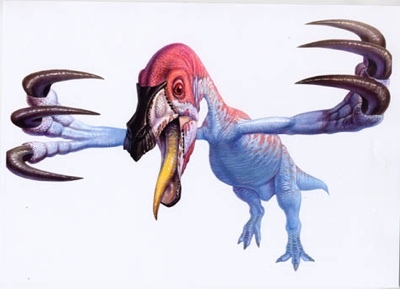
But in fact, use “weapons” are still much debated. Some researchers say the claw was used as a primary tool for hunting.
Some others say the claws are too blunt, so only used as a defensive weapon. There are even opinions that say that Deinocheirus using arms are great to climb trees, although this hypothesis is widely ignored.
2. Diprotodon
Before humans first set foot on the Continent of Australia about 40,000 years ago, a wide range of large-sized marsupials once lived there. One of the biggest is Diprotodon.
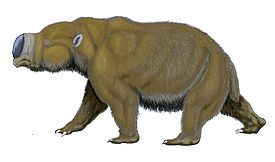
Just like most other marsupial animals, Diprotodon also consume leaves as its main food. Although they are not animals that have nimble movements such as Kangaroos, but the size of a large and strong body makes the predator is very hard for the defeated.
3. Moropus
When scientists found the fossil Moropus for the first time, they seemed difficult to believe the morphology of the creatures on this one. Ancient animals with a head resembling the head of this horse really has a weird body shape.
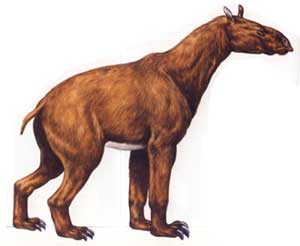
With long nails sharp, distant, and the ability to run well of course he has a good self defense to avoid the threat of predators. Moropus live in areas south and west Asia around 12,000 years ago.
4. Ambulocetus
This is one of ancient creatures that many claimed the adherents of Neo-Darwinism as strong evidence of a transition period into the terrestrial species of sea creatures. Ambulocetus, ancient animals with a mixture of similar stature ancestors of whales and otters live in what is now known as modern Pakistan about 50 million years ago.
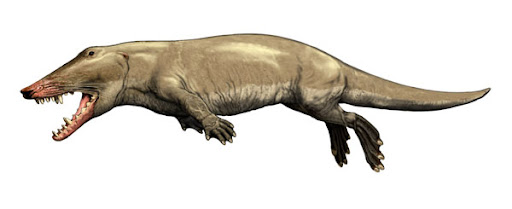
Ambulotecetus an adult body length is estimated about 12 feet. Form a large head with a long jaw. Sharp teeth designed for capturing and gripping prey. In the water, he can move with nimble thanks to the help of his tail that is used as the “motor” for his body.
5. Lystrosaurus
Before the emergence of dinosaurs, living creatures on Earth once enlivened by some strange animal that resembles a reptile. One of them is Lystrosaurus.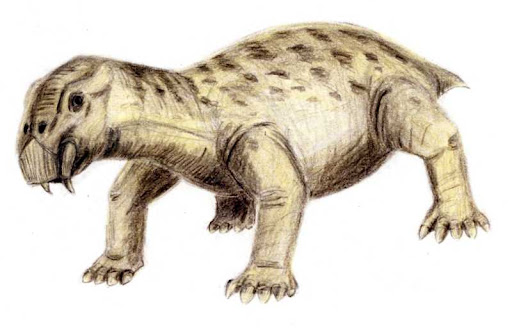
Ancient animals are quite interesting because this odd shape living in marshy habitats, but he also does not matter if it should be forced to inhabit places that are categorized as dry. Lystrosaurus estimated to inhabit the earth about 230 million years ago.
6. Phorusrhacos
About 20 million years ago, South America is a continent that has so many variations of species of birds and mammals. One of them is a fairly well-known species of carnivorous bird named Phorusrhacos.

Phorusrhacos species estimated to exist until 3 million years ago. Scientists estimate Phorusrhacos extinction caused by the emergence of several other predators that migrate from North to South Amrika after both are connected by the middle of mainland America that appears to the mainland.
7. Mammoth
I’m sure you guys are already familiar with this one legendary animal. Mammoth is one of the ancient animals that are so popular. Physically resembles the elephant but has a thick fur disekujur body.
Mammoth is about animals that inhabit the coast of Wrangel Island north of Siberia. Many scientists believe, the last generation of Mammoth still be found around 4000 years ago during construction of Khufu’s pyramid at Giza, Egypt has been completed.
8. Harimau Gigi Pedang
They are one of the ice age animals are so famous. One of the deadliest predators terganas nan ever set foot on this earth. Tiger Tooth Sword inhabit the western United States during the last ice age, but they also spread out in several other North American regions as well as some living in the South American region.
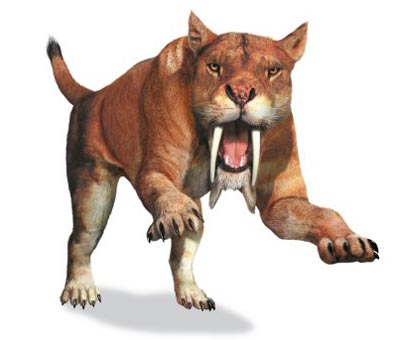
Known, there are 2 genus of these animals, namely Genus Genus Smilodon and Homotherium. In general, the type of Genus Smilidonpanjang fangs can reach more than 18 centimeters, while for genus Homotherium have about 10 inches long canines. These animals hunt horses, bison, antelope as food.
9. Deinotherium
Deinotherium is one of the largest land mammal that ever set foot on Earth. Prehistoric creatures that lived at a time when the middle Miocene to early Pleistocene is in general have a high 3.5 to 4.5 meters (Deinotherium size adults) with weight ranges from 5-14 tons.
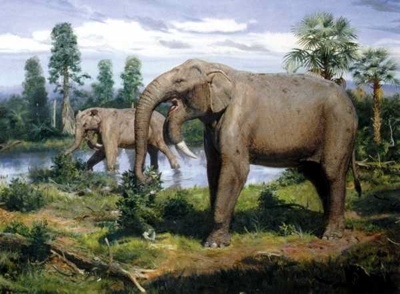
Ivory may be used as a tool to dig the ground to gain access to the roots and vegetables. Deinotherium genus has three species that have been identified, and all have large size. Species that diataranya Deinotherium giganteus, Deinotherium indicum, and Deinotherium bozasi.
10. Therizinosauridae
Therizinosauridae a family of theropod dinosaur which lived in the late Cretaceous period (99.6 – 65.5 million years ago). Unlike most of which is a carnivorous theropod, Therizinosauridae are herbivores (although some are known as omnivores).
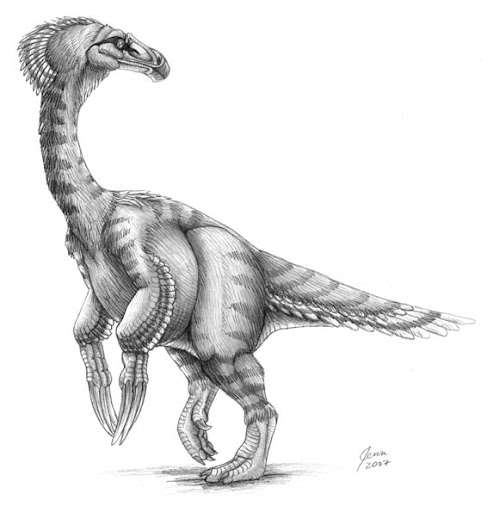
Therizinosauridae family has an eccentric physical shape. In general they are long-necked and has a feather. Also claws they are also quite large, perhaps there are more than one meter in length.
11. Epidexipteryx
Epidexipteryx is a small genus of dinosaur maniraptorian. Prehistoric animals that lived in the territory of China around 152-168 million years ago this is one of the smallest dinosaur ever.

Unlike the usual feathers we find in animals the class of bird, feather structure on this Epidexipteryx such as a sheet of tape that stands extends upward. However, due to lack of remiges (wing feathers) makes this animal can not fly.
12. Longisquama insignis
Living in the mid to late Triassic period (230-225 million years ago), Longisquama insignis is an ancient lizard is so interesting because he has a series of “fur” long standing tall along the back.The structure of “fur” is so far remained a matter of debate among researchers. Some researchers believe that a long structure that grows on the back Longisquama is not the kind of feathers, but scales that generally can be found in reptiles such as Iguana.
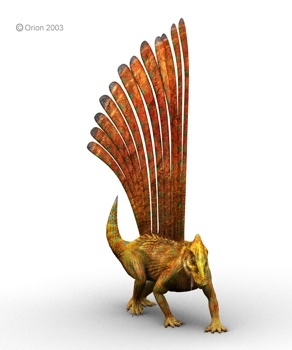
This structure is probably just a type of fern plants that come into the fossil with him and then misinterpreted. Frasher opinions may be strengthened by the fact fossilized structures found in some animals is often nothing to do with the fossils of these animals.
13. Sharovipteryx
Sharovipteryx is a reptile that lived contemporaneous with Longisquama, namely in the mid to late Triassic. Ancient creature that has a body length of about eight inches with a weight of 7.5 grams is very unique because he has the size of a very large hind legs than front legs.The hind legs are so wide, coupled with the membrane that grows them make it as if it had wings that could be used to fly. Despite the fact that this animal was not able to fly like a bird, but by no means a stretch of membrane wings on his feet it becomes worthless.
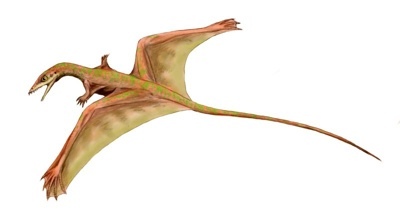
Some researchers believe the animal may have a close relationship with pterosaurs remember them that have the same flight membrane that grows between his legs, although this is still very controversial.
14. Pterodaustro
Pterodaustro have a very long skull, which is about 29 cm. Snout dominates 85% of the total length of skull. Another oddity is the physical form an unusual set of teeth.
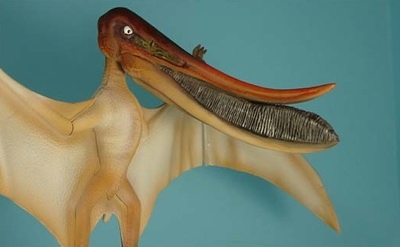
Teeth are thousands of these numbers grow in two long grooves are parallel to the edge of the jaw. About 3 cm in length with a width between 0.2 – 0, 3 millimeters. Initially thought of this structure is not a tooth, but after conducting some research these allegations eventually fade. The structure is really a normal tooth because there are enamel, dentin and pulp.
15. Microraptor
Genus Microraptor is one of a range of small dinosaur. They lived about 120 million years ago and the population is spread out in several parts of China. This type generally has four wings with an elongated tail.Despite having two pairs of wings, Microraptor can not fly. Instead, he might just glide from one place to another like a flying squirrel.
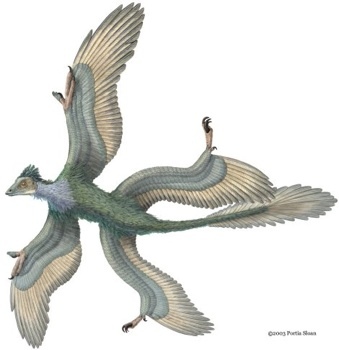
Some researchers argue, it is likely that many animals spend their lives in trees, referring to the fact that the wings Microraptor hinder their ability to walk on land.
16. Amphicoelias fragillimus
Elusive fossil was discovered by the famous paleontologist Edward Drinker Cope. Cope has found many fossils of prehistoric, but this one is the most bizarre.

But again, the fossil is still much debated because of the difficulty to identify the fossil discovery of a very, very minimal. Is this creature is the largest animal that ever walked the earth or just a misunderstanding and just a hoax.
0 komentar:
Posting Komentar